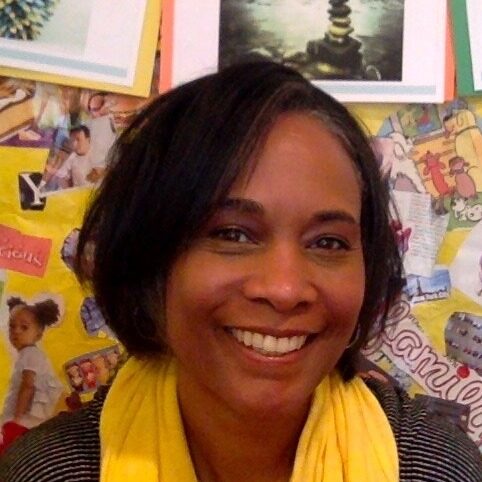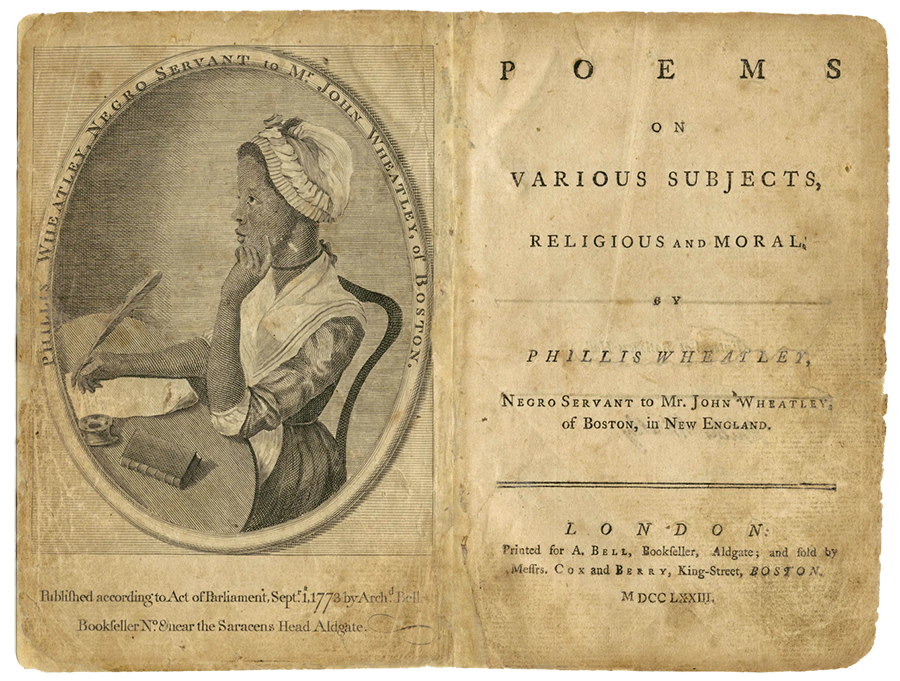
Amanda Gorman’s commanding inaugural presentation has ignited a renewed interest in the equally skilled 18th century poet, Phillis Wheatley (c. 1753 – 1784). A language arts project in which students compare these Black female poets could serve as a commentary on the past and present. Through read alouds, independent reading, and guided research, children can gain the background knowledge to thoughtfully discuss slavery and racial injustice. Children will understand that a writer’s perspective is evident in their work; poetry is a writing form that conveys the writer’s perspective, and African-American perspectives can be examined through poetry. This blog post will focus on developing a poetry and shadow puppetry project with a freedom and resistance theme.
Poetry with a purpose
The resistance to injustice is a theme in both Phillis Wheatley’s and Amanda Gorman’s poetry. Wheatley, captured and enslaved at age four, exposed the truths of enslaved life to resist her bondage. In defiance of colonial restrictions, Wheatley traveled to England to publish her poetry. Youth Poet Laureate Gorman, lauds social justice warriors, like Audre Lorde and Maya Angelou, for her creative opportunities. Gorman defines her body of work as a political act. Each writer, speaking through an African-American perspective, proves that poetry has purpose.
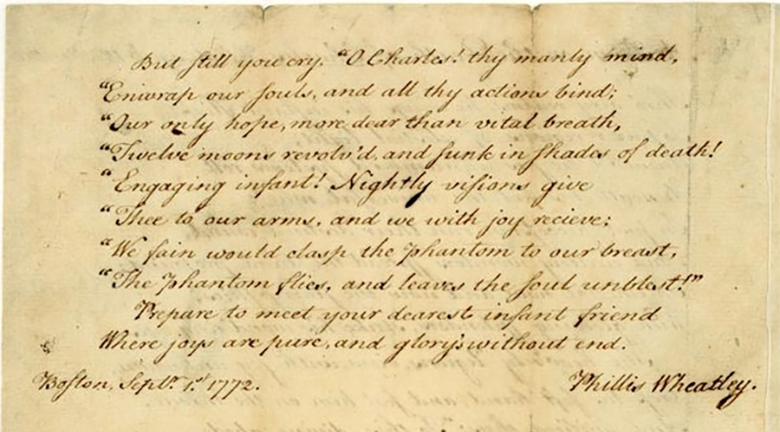
Puppetry Workshop
Often poetry is experienced through reading and writing structured poems. The performance art component is an innovative way to enliven the standard poetry study. A culminating shadow puppetry workshop taps into students’ creativity and compliments a thematic study. Kids can create a Phillis Wheatley shadow puppet as a companion art project. As an art form, puppetry piques curiosity and engages the artist, writer, and the performer. At home or in the classroom, kids of any age are able to experience the creative art process and to develop performance techniques. Kids apply their reading, research, and writing skills to write dialogue, choreograph scenes, and to present a performance. Collaborative or independent puppetry presentations work for in person or virtual settings. The Past Times site is a valuable resource for the novice or expert puppeteers. The site offers a free patterns, and helpful instructions and tips for puppet creation.
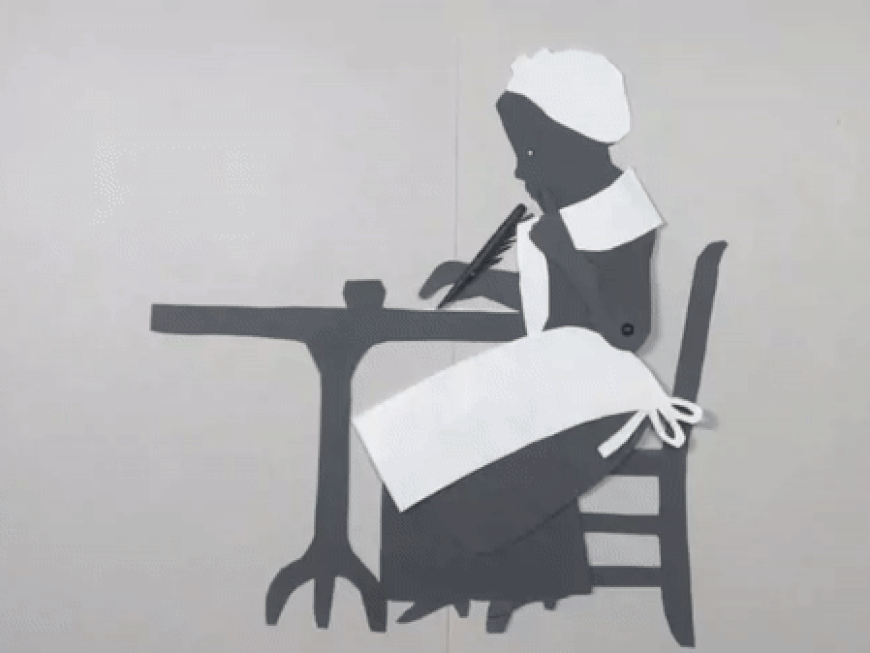
A puppetry performance themed around freedom and resistance will engage kids of any age. With guidance, a definition of freedom can be drawn from picture books, novels, current events, or their own lives. Kids can then identify the ways Wheatley’s and Gorman’s poetry pushes against injustice. Vignettes may be inspired by Wheatley’s or Gorman’s words, similarly themed poems, or their own original poems.
Poetry is personal. Capturing a poet’s mood, tone, and perspective within a performance requires kids to have empathy. Your workshop may need to include opportunities for kids to become familiar with these writing conventions, build background knowledge, and practice analyzing poetry. Additionally, free play with the Phillis Wheatley puppet creates a personalized experience while improving puppet handling. A variety of platforms or devices are available to collaborate, fine-tune puppetry skills, or record a polished performance.
A poetry study of Phillis Wheatley’s and Amanda Gorman’s poetry, paired with a shadow puppetry workshop, is a unique way to engage kids and gain an understanding of African-American perspectives. A list of resources to engage students in a poetry and puppetry study can be found at the bottom of this post.
Puppet of Phillis Wheatley
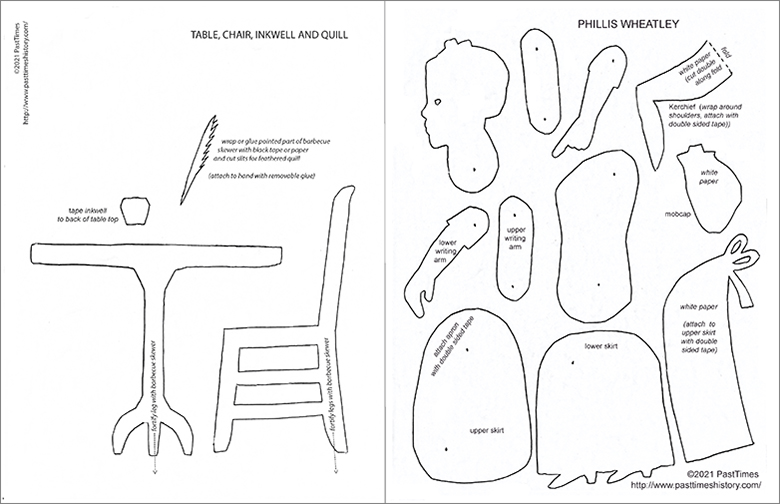
The puppet of Phillis Wheatley, based on the engraving of her portrait, includes a white paper mobcap, kerchief, and apron that can be taped to the puppet with folded scotch tape. The quill, taped to her hand, is made of the pointed part of a barbecue skewer, wrapped with black painters tape that has incisions, cut with scissors. The legs of the table and chair are fortified by barbecue skewers as holding rods that can be attached to the inside of a puppetry screen or put in a cardboard stand of corrugated cardboard (see example).
- Download a pattern of Phillis Wheatley
- Download the pattern for table, chair, and quill
- How to make puppets
- Historical puppets for Language Arts
Resources
Poetry for Children
Phillis Wheatley
- Phillis Wheatley: The unsung Black poet who shaped the US
- Phillis Wheatley, Poet
- Phillis Wheatley’s poem on tyranny and slavery, 1772 (includes questions for discussion)
- How Phillis Wheatley was Discovered
- Memoir and poems of Phillis Wheatley
Amanda Gorman
- Amanda Gordon’s Inaugural poem “The Hill we Climb” (performance and transcript)
- Amanda Gorman Tedtalk: Using your voice is a political choice
American Slave System
- Museum of the American Revolution: Interactive “Finding Freedom”
- Audio Interviews With African American Former Slaves

